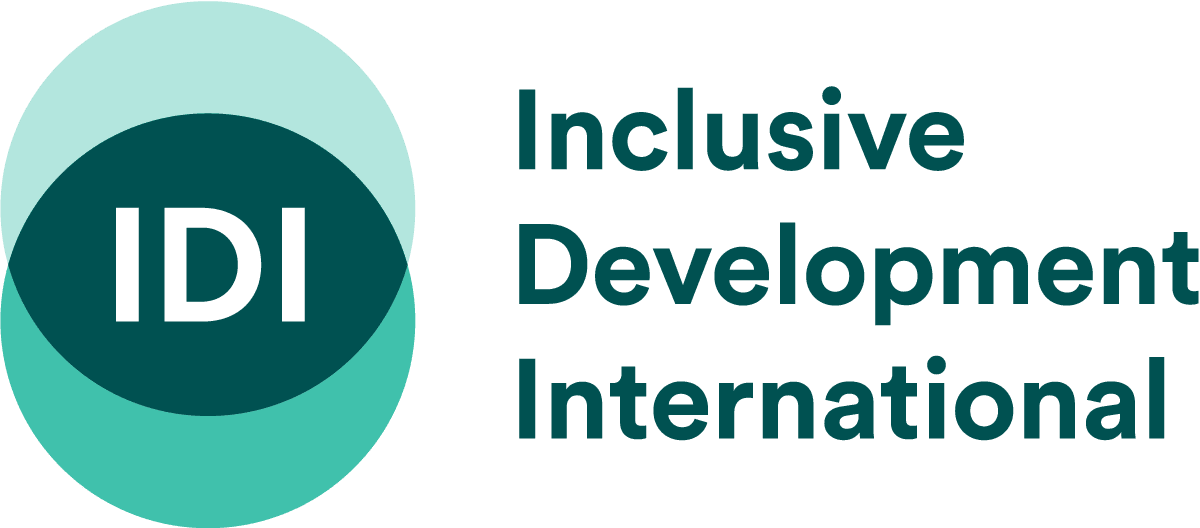Following the Palm Oil from a Harmful Plantation in Indonesia
In West Sulawesi, Indonesia, a subsidiary of Astra Agro Lestari, PT Mamuang, operates an oil palm plantation that has impacted local communities. Inclusive Development International investigated the plantation’s supply chain.
Before we began investigating PT Mamuang, we did some basic research to understand palm oil supply chains. The supply chain begins at the plantation level, where fruit are grown on oil palm trees. After harvest, the fruit are taken to mills, where they are crushed and pressed to create crude oil. This oil then gets shipped to refineries, where it is processed into an oil that end users — typically large consumer brands — utilize to make products such as food, beverages and soap.
Using the sources described below, we were able to identify well-known consumer brands that are sourcing palm oil from PT Mamuang, including PepsiCo, Proctor & Gamble, Nestle and more.
1) Palm Oil Tracker:
Inclusive Development International’s Palm Oil Tracker shows only one company, Johnson & Johnson, sourcing palm oil from PT Mamuang. This is unusual. Most industrial oil palm plantations have supply chain links to several or more major consumer brands. The lack of other connections told us that we should keep looking.

2) Google:
A basic Google search of ”mamuang” AND “mill list” uncovered another consumer brand, Avon Products, sourcing palm oil from PT Mamuang. The search result led us to a credible source for this evidence.
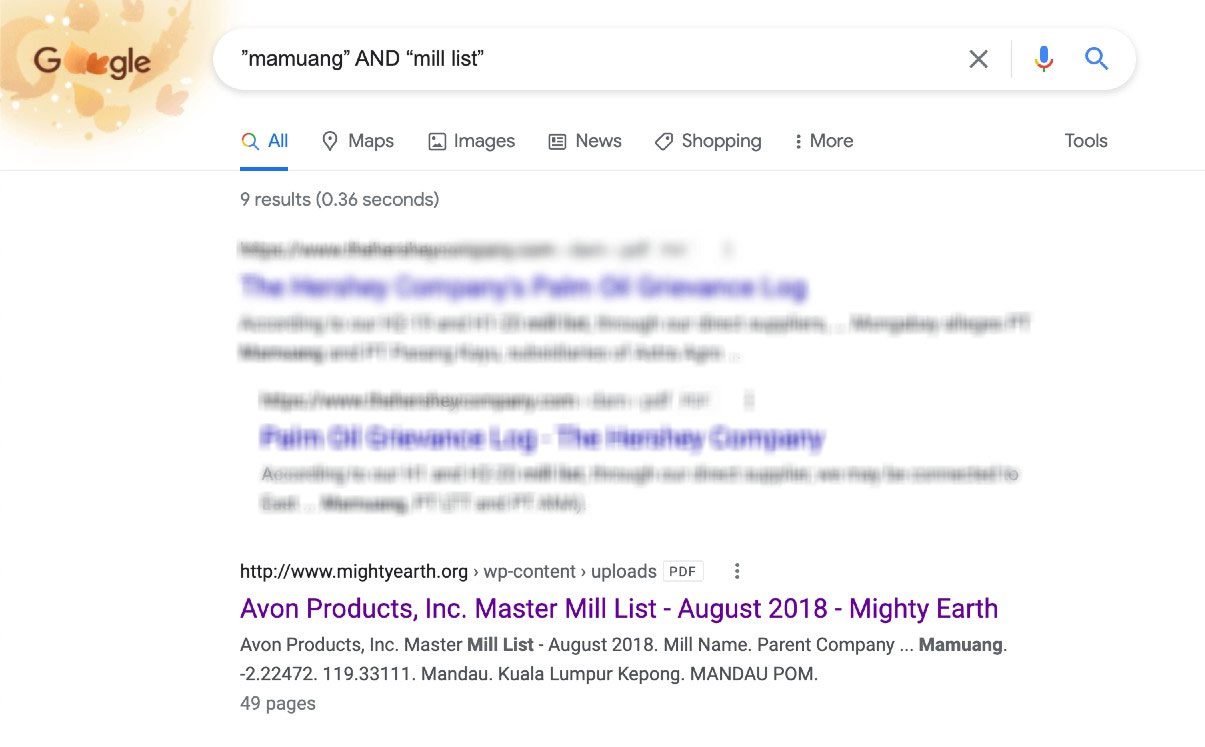
3) Social Media:
Scanning social media for images, videos, written posts and geolocation data can sometimes shed light on potential investigative opportunities. For a list of sources that help analyze social media content, see the Follow the Money Toolkit.
Analyzing multimedia content for clues captured in photos and/or videos such as company vehicles and company logos can potentially uncover additional supply chain links. Unfortunately, this was not the case here.
However, we did manage to uncover geolocation data through Instagram that helped us locate the plantation complex on a satellite map. On Instagram’s search bar, we selected “Places” and typed in “PT Mamuang.” This revealed photos of the plantation that contained geolocation data that we could use in searches on Apple Maps.
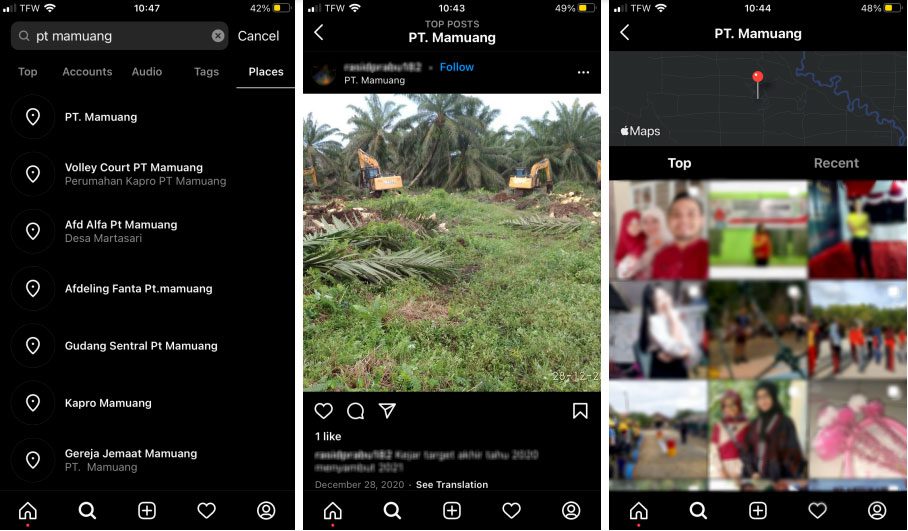
4) Satellite Imagery
On Apple Maps, using the geolocation data obtained through Instagram, we identified the living quarters and offices of PT Mamuang’s employees. However, we could not locate PT Mamuang’s on-site mill, an important stage in the palm oil supply chain.
Identifying the mill was important because buyers such as Nestle and Mars disclose the name of the mills — not the plantations — they source from. A skim of the surrounding area shows plantations adjacent to PT Mamuang that have on-site mills. We surmised that the raw palm fruit from PT Mamuang could potentially be processed at these mills and then sold on to downstream buyers. But we needed further evidence.
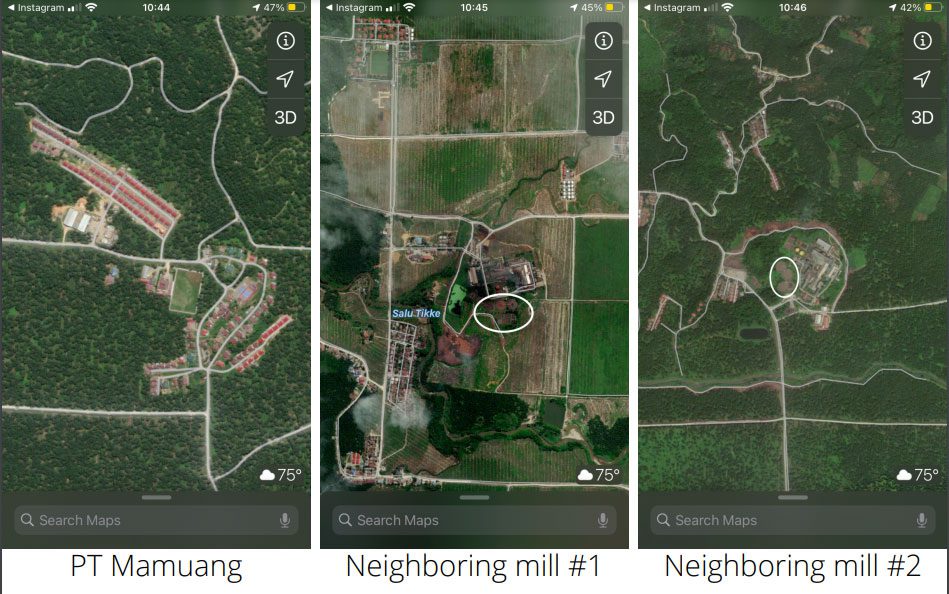
The white ovals in pictures 2 and 3 show the location
of mills at neighboring plantations
5) Global Forest Watch:
This interactive map that outlines oil palm plantation concessions confirmed that there are two plantations adjacent to PT Mamuang. According to the map, the companies that operate these plantations are PT Letawa and PT Pasangkayu.
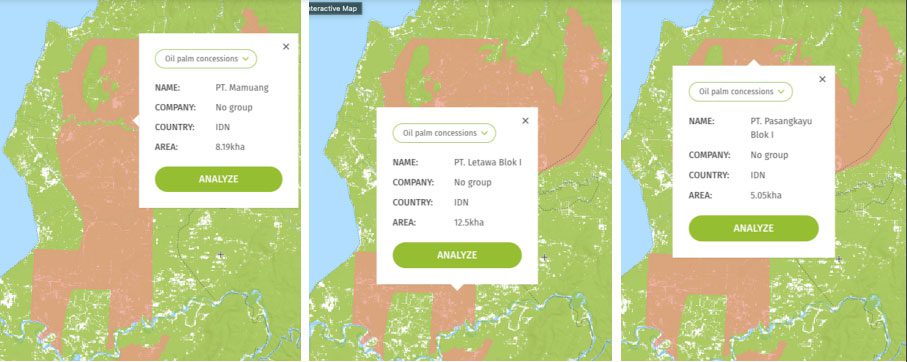
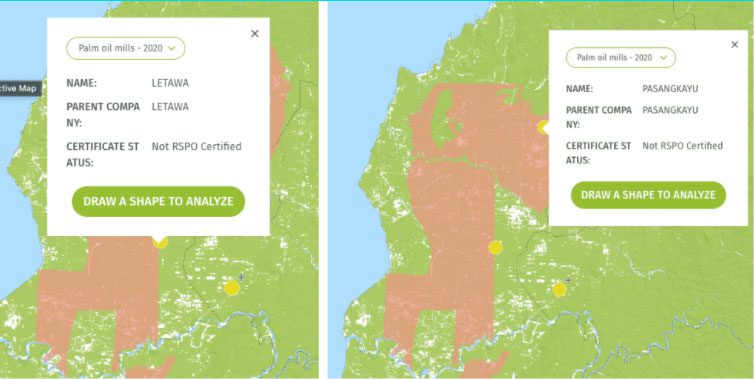
6) Company filings:
A review of Astra Agro Lestari’s most recent Annual Report shows that all three companies are wholly owned subsidiaries of Astra Agro Lestari. This confirms that the three sites are connected through ownership to Astra Agro Lestari.

It is important to understand how an industry works. Through industry estimates, we learned that palm fruit must be processed within 24 hours of harvest, since it is highly perishable. This means that plantations must be within 50 km of the mill they supply. PT Letawa and PT Pasangkayu fall within PT Mamuang’s sourcing area. Considering this, and the fact that they are all owned by the same parent company, harvested palm fruit from PT Mamuang is likely transported to one of these two (or both) mills.
By confirming these two mills are connected to the parent company, we were able to find more downstream buyers. Another search on the Palm Oil Tracker reveals that many consumer brands — including Mondelez, PepsiCo, Kellogg, Proctor & Gamble, Nestle, and more — source palm oil from these two mills and, therefore, are likely sourcing palm oil from PT Mamuang.
As with all supply chain research, we could not be fully certain of our findings. We were fairly confident that Johnson & Johnson and Avon Products were sourcing from PT Mamuang, since the companies themselves disclosed this information. And while we had solid evidence suggesting that other consumer brands may be sourcing PT Mamuang’s oil through two related mills, we could not be 100% certain that this was the case. Including this evidence in letters to the brands, and asking them to confirm or deny whether they were sourcing oil from PT Mamuang, was the only way to know for sure.
